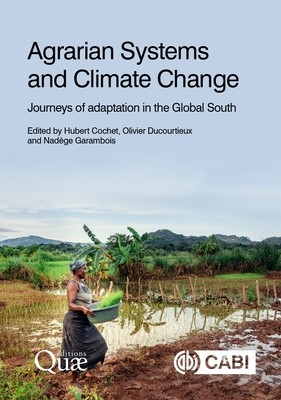
- We will send in 10–14 business days.
- Publisher: CABI
- ISBN-10: 1800628110
- ISBN-13: 9781800628113
- Format: 17.3 x 24.6 x 1.5 cm, kieti viršeliai
- Language: English
- SAVE -10% with code: EXTRA
Agrarian Systems and Climate Change (e-book) (used book) | bookbook.eu
Reviews
Description
This book examines the link between global change and impacts and adaptation at the local level, combining a systemic approach and connecting different scales of analysis. It unravels the complex ties between the scenarios developed at global, continental, and regional scales of analysis and farmers' concrete experiences, lived at the territorial level. In addition to this great discrepancy in terms of scales of analysis and understanding of processes, there is a need to relate the multi-generational scale of possible climatic changes to that of agricultural practices carried out on the agricultural season level.
Based on the detailed study and comparison of a dozen contrasting local situations in sub-Saharan Africa and South-East Asia, the authors highlight the processes and trajectories which explain the high exposure to the hazards of different groups of farmers, as well as their unequal capacity to adapt. They explain the causes of this vulnerability and illustrate the weight of past and current choices in terms of agricultural, environmental and trade policies. Finally, they present the adjustment modalities and the past and current transformations of peasant practices moving towards a reduction in exposure to hazards, a reduction in vulnerability, and better adaptation to global changes: climate change, demographic growth, increased competition for access to resources, changes in relative prices and market fluctuations, deregulation and decline in public support, etc. In conclusion, they outline possible paths in terms of adaptation and proposals for political measures to support producers.EXTRA 10 % discount with code: EXTRA
The promotion ends in 23d.04:07:11
The discount code is valid when purchasing from 10 €. Discounts do not stack.
- Publisher: CABI
- ISBN-10: 1800628110
- ISBN-13: 9781800628113
- Format: 17.3 x 24.6 x 1.5 cm, kieti viršeliai
- Language: English English
This book examines the link between global change and impacts and adaptation at the local level, combining a systemic approach and connecting different scales of analysis. It unravels the complex ties between the scenarios developed at global, continental, and regional scales of analysis and farmers' concrete experiences, lived at the territorial level. In addition to this great discrepancy in terms of scales of analysis and understanding of processes, there is a need to relate the multi-generational scale of possible climatic changes to that of agricultural practices carried out on the agricultural season level.
Based on the detailed study and comparison of a dozen contrasting local situations in sub-Saharan Africa and South-East Asia, the authors highlight the processes and trajectories which explain the high exposure to the hazards of different groups of farmers, as well as their unequal capacity to adapt. They explain the causes of this vulnerability and illustrate the weight of past and current choices in terms of agricultural, environmental and trade policies. Finally, they present the adjustment modalities and the past and current transformations of peasant practices moving towards a reduction in exposure to hazards, a reduction in vulnerability, and better adaptation to global changes: climate change, demographic growth, increased competition for access to resources, changes in relative prices and market fluctuations, deregulation and decline in public support, etc. In conclusion, they outline possible paths in terms of adaptation and proposals for political measures to support producers.

Reviews